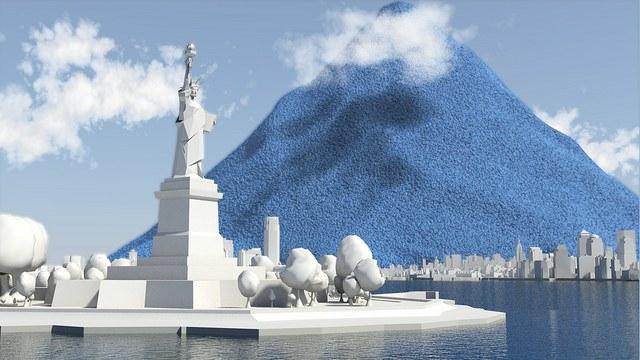
We've tried getting rid of carbon emissions in multiple ways: by reducing them through regulation and incentives, by establishing cap and trade programs that balance the impact and reward reduction, and by incentivizing corporations to reduce them through innovation.
That last concept highlights better than most, just how hard it is to replace carbon emitting technology. Some would argue that the Volkswagen scandal is not just an indicator of values gone awry, but the considerable challenge of creating technology that meets our ecological standards. Judging from recent studies, it's harder than we think to replace our old way of generating power.
So the backers of the renowned XPrize has come up with another option: carbon conversion.
As is so often the case, this year's XPrize is dedicated to answering the seeming unanswerable -- figuring out how to capture those carbon emissions and convert them into handy uses -- really handy uses. Potential contenders will be happy to know that some of the work has already been done for them: scientists have already dabbled in converting carbon to synthetic diamonds.
But the XPrize backers, which include the Canadian Oil Sands Innovation Alliance and NRG, are looking for more. The contestants, when presenting their ideas, must be able to "prove they can be deployed at power plants and other industrial facilities.
"Ultimately, the impact of the prize will go far beyond the critical demonstration of innovative technologies," says the website, by incentivizing new markets and new investments. Reducing the current exorbitant cost of carbon dioxide removal (CDR) technology is also essential.
And the prize for doing so is nothing to sneeze at. A total of $20 million has been pledged by the backers, to be divided according to several benchmarks of competition: the proposal and testing in a lab setting, and the formal demonstration in a power plant.
Two tracks of competition have been developed: one for coal power plants and one for natural gas. For each track, a pool of $2.5 million will be divided among the contestants that pass the lab stage, and $7.5 will be awarded the winner who can demonstrate the most practical application for carbon conversion in a power plant. Teams will be scored on how much C02 their technologies convert as well as the net value of their products.
The Carbon XPrize formally launched on Sept. 20, and is expected to garner a fair amount of attention across the globe, which is of course just what the XPrize team is looking for. The more entrants, the better the chance of finding a more affordable, useful technology for CDR.
"As with any Prize it’s open to any innovator,” said Peter Bunje, XPrize's principal and senior scientist for energy and environment. “But you have to prove you can do something impressive.”
Image credit: Carbon Visuals, Flickr
Jan Lee is a former news editor and award-winning editorial writer whose non-fiction and fiction have been published in the U.S., Canada, Mexico, the U.K. and Australia. Her articles and posts can be found on TriplePundit, JustMeans, and her blog, The Multicultural Jew, as well as other publications. She currently splits her residence between the city of Vancouver, British Columbia and the rural farmlands of Idaho.














